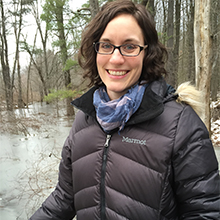 Focused Conservation: A Note from ACJV Coordinator, Aimee Weldon
Focused Conservation: A Note from ACJV Coordinator, Aimee Weldon
As a Joint Venture, our goal is to move the needle on bird conservation through the work of our partnership. The ACJV is large – spanning the 17 states and territories from Maine to Puerto Rico – and the list of birds and habitats in need is long. Addressing the many conservation needs in our region while also making a real difference on the ground can be challenging. To address this challenge, the ACJV has chosen to apply our collective energies to a small but strategic set of conservation priorities and do our best to hit the ball out of the park.
With help from our Technical Committee and our vast network of partners, the ACJV Management Board considered several suites of priority birds and habitats at the May 2016 Board Retreat. The goal was to select species and habitats that 1) represent the full geography of the partnership; 2) have a high degree of conservation need; and 3) where the Joint Venture partnership can provide the greatest added value.
The result of the retreat was to focus ACJV efforts primarily on coastal marsh habitat, with a subset of flagship species (Saltmarsh Sparrow, Black Rail and American Black Duck) chosen to represent that habitat:
Coastal marshes are one of the most imperiled habitats along the Atlantic Coast, impacted by sea level rise and coastal development. They span the entire geography of the Joint Venture, making the ACJV uniquely responsible for their conservation. The threats to this habitat are high and difficult to address; as a result, a whole suite of tidal marsh birds are in decline – some of which are facing extinction in our lifetimes.
Saltmarsh Sparrow and Black Rail – flagships of the high marsh, these two species are experiencing catastrophic declines of 90% or greater. Arresting and reversing declines will require immediate and coordinated conservation action across their breeding range.
American Black Duck – our low marsh representative, Black Duck populations have declined by half since the 1960s in our region. Restoring the former abundance of this species will require a shared and sustained commitment to coastal marsh conservation.
For all three species, the ACJV will set population goals linked to habitat goals and coordinate efforts to meet them. Read on to see the progress we have made on flagship initiatives in the past year.
But what about all the other species?!
A common concern and question posed has been “What happens to everything else the JV has worked on in the past?” A strategic focus does not mean the JV is abandoning past priorities, but we must face the practical reality of limited capacity. The JV will invest partnership energies towards a short list of priorities where we can best contribute toward existing conservation efforts. Our flagship initiatives will occupy the bulk of staff and partnership time (about 2/3rds) but we will also continue to work strategically on non-tidal wetlands (waterfowl, shorebirds, waders) and beach habitat conservation through the Atlantic Flyway Shorebird Initiative. NAWCA will remain a major tool to meet our goals in each set of priorities.
If you have questions or concerns you would like to share contact Aimee_Weldon@fws.gov.


